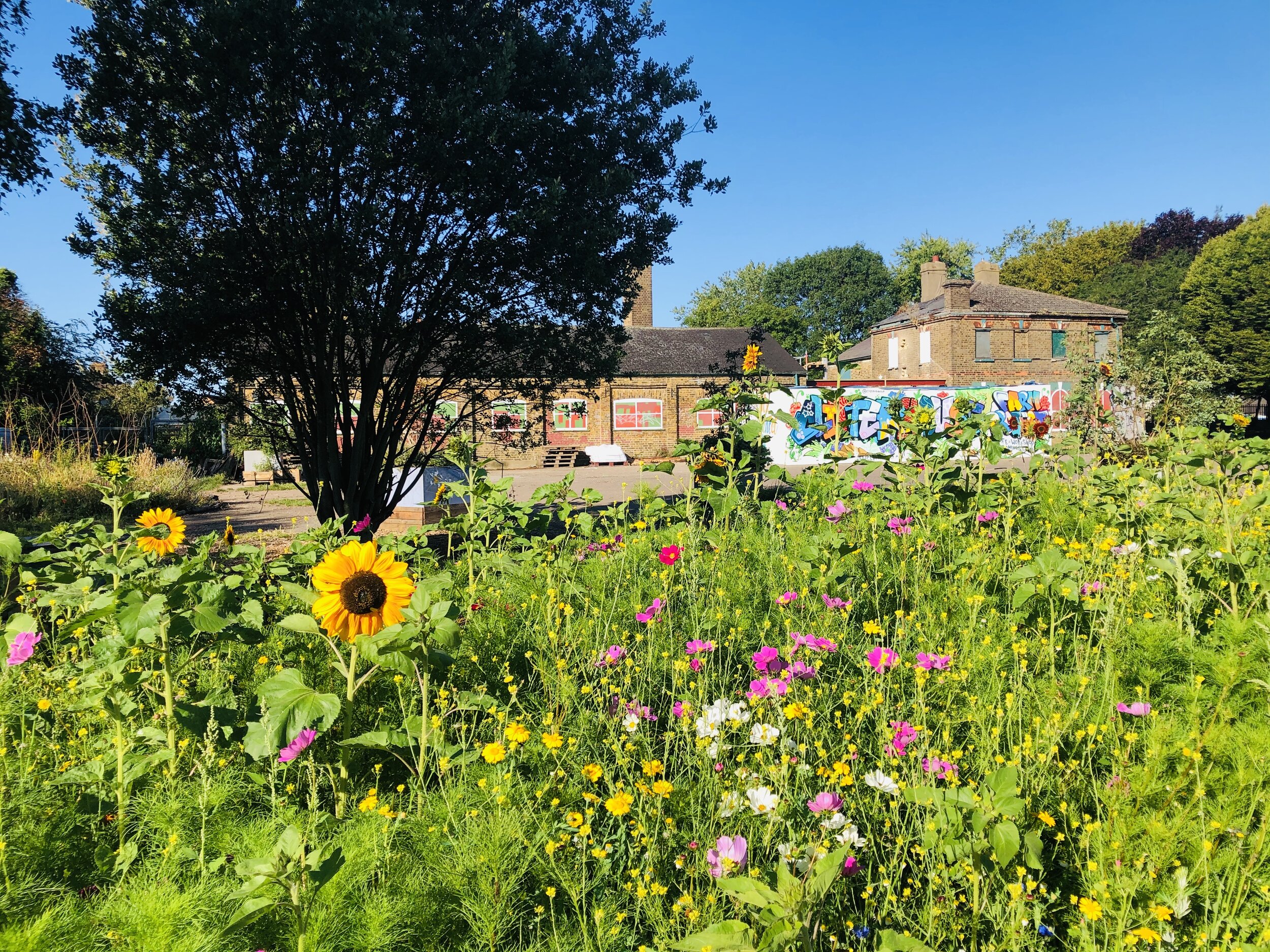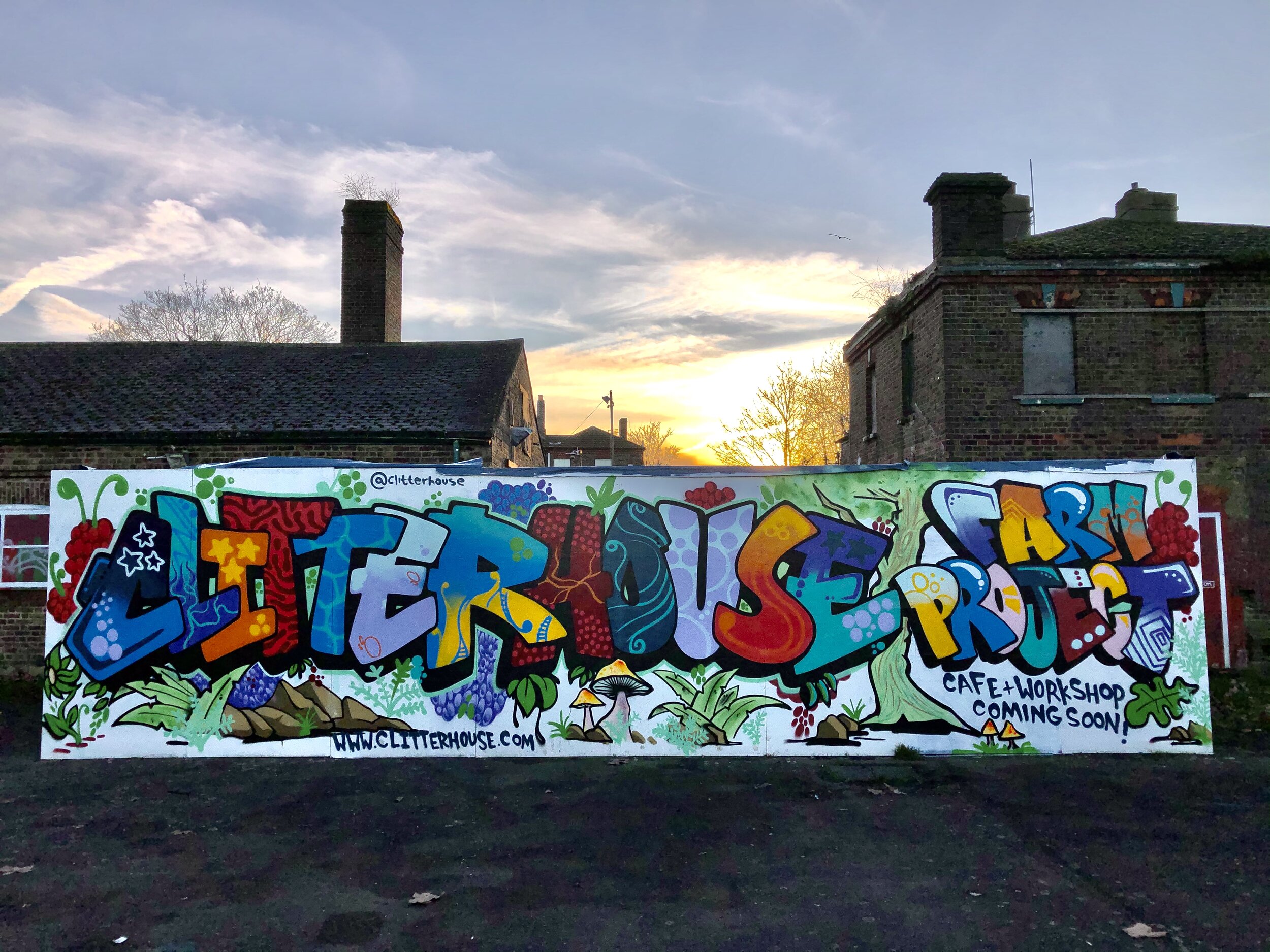
Our history



Clitterhouse Farm and outbuildings can be traced back to the early 1300s. The Farm was originally a woodland sub-manor held by John de Langton in 1321 and by his younger son Robert in 1335. With evidence of a moat and orchards around the original buildings
The ‘Clitter’ part of Clitterhouse originates from the word ‘clite’ or clay, and is interpreted as ‘clay house’.
By the 1770’s the farmhouse was a large timber-framed building of two storeys, with three gables and a jettied first storey. It occupied one side of a courtyard, on the other sides of which were weatherboarded barns of the standard Middlesex type, with steeply pitched roofs, and stables.
A plan and drawing from 1715 shows timber framed and weather boarded buildings grouping around a central courtyard, referenced to as 'Claters House'. Local farming had switched from wood to hay to supply London’s increasing horse population.
The playing Fields were used as a community allotment space post-war, and then converted to playing fields.
The outbuildings were last used as changing rooms, public toilets and a park keeper's cottage, followed by a Barnet Depot. They were then left unused for over a decade and squatted many times over the year resulting in significant damage to the structures and large amounts of waste and rubbish inside the buildings.
The Clitterhouse Farm Project was established in 2013by 4 local residents - Alistair Lambert, Luisa Vallejo, Thomas Ball and Paulette Singer - to protect the buildings from proposed demolition as part of the Brent Cross Cricklewood regeneration. Through active participation and campaigning, the buildings were saved from demolition in October 2014 and are now regarded as one of the only remaining heritage assets in the area.
In 2015, volunteers got together and built a temporary cafe in the space between the original buildings. The cafe was run by volunteers, and also served as a hub for a number of activities including stay and play sessions for children. Clitterhouse Farm Project formalised and incorporated as Our Yard - a charitable company.
HADAS (Hendon and District Archaeological Society) have carried out two archaeological digs at Clitterhouse Farm during the summers of 2015 and 2016 and return regularly to the farm to talk about the rich history of the site.
HADAS have written a number of reports about the farm. Click the link below to read more
We adopted an unused patch of land on the southern side of the farm. We spent hundreds of hours clearing up after decades of neglect, fly-tipping and overgrowth. After a lot of hard work, the space was finally accessible and we got to work making raised beds, borders and generally working on the space to make it the colourful, vibrant community garden it is today. The garden has expanded significantly and has been awarded as an example of a high impact and inclusive community garden
In 2018, Our Yard crowdfunded to raise the money needed to construct an enlarged cafe and to refurbish a portion of the small barn into 3 flexible workshop spaces. The crowdfund was a success and raised almost £100k in pledges, which included £50k from the Mayor of London. The main structure was completed in 2021 and works continue on the workshops today







